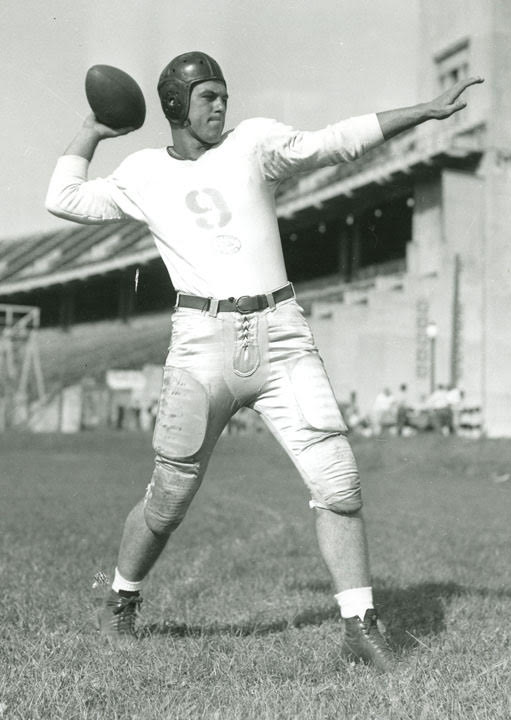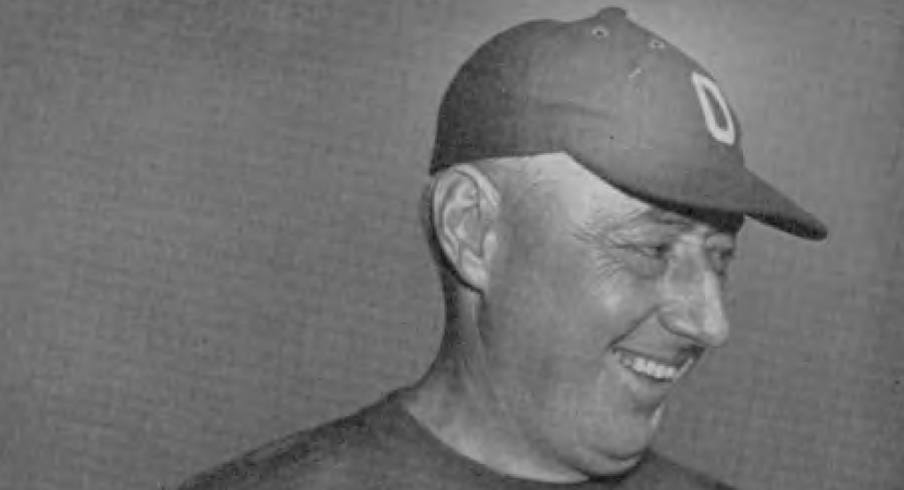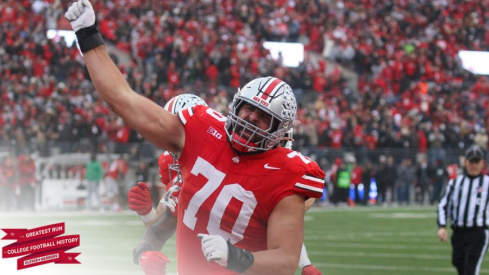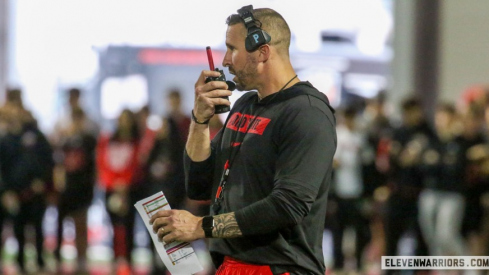Before Ohio State plays against Minnesota on Saturday, we take a look back at how one historic game against the Golden Gophers led to the end of Francis Schmidt’s tenure in Columbus and the eventual hiring of Paul Brown as head coach.
The 1940 matchup was only the fifth time Ohio State and Minnesota had met on the gridiron since OSU became a Western Conference member in 1912. The 1940 contest was the first with both teams ranked in the Associated Press’ top 20: Minnesota was ranked seventh and Ohio State was ranked 15th. One program was on a climb to a storybook season, the other was on a path toward one of its most embarrassing seasons ever.

Ohio State fans were very excited prior to the 1940 season. The Buckeyes were the defending Western Conference champions and had a loaded roster including All-American quarterback Don Scott and All-Conference center Claude White. The fervor was amped up a bit more than usual because some of the national press had singled out Ohio State for postseason honors. Most notably, The Saturday Evening Post’s “Pigskin Preview” written by Francis Wallace. Long before the Internet, sports cable networks or even Beano Cook, the entire college football pundit industry was essentially a handful of syndicated newspaper and magazine writers. Wallace was “by far the most nationally circulated [football] critic” and his annual forecasts were greatly anticipated and noteworthy.
Wallace picked the Buckeyes to repeat as Western Conference champions and finish the season near the top of national polls. Wallace was careful to warn his readers that Ohio State had a “distressing habit of falling apart in the clutch ''and that “elements of another collapse” lingered in 1940. The AP’s Fritz Howell warned that it was premature to “start awarding gold footballs to the Bucks” before the season had begun. Most Buckeye fans chose to cling to the lustrous paragraphs being written by touring correspondents and gloss over the negatives.
There seemed to be a consensus among Columbus’ famed “Downtown Coaches” and the local sporting press that Ohio State’s greatest foe was the Buckeyes themselves, and the 1940 squad seemed to make it their mission to prove it.
Ohio State’s head coach, Francis Schmidt, was hired in 1934 to breathe life into an Ohio State program that had grown stale under previous coach Sam Willaman. Despite producing consistent winners, his teams were criticized for being “dull” and “uninspiring,” and some had dubbed the former Buckeye star, “Sad Sam.” Most concerning to OSU officials was that the crowds at Ohio Stadium had fallen to around just 20,000 per game, and apathy was as big a factor as the Great Depression was. Despite a 7-1 record in 1933 – the loss was a 0-13 drubbing by Michigan – Willaman was forced to resign. At Schmidt’s hiring, one Columbus sports writer wrote that fans would “rather see a Schmidt team lose colorfully than a Willaman team win drably.”
Schmidt was anything but dull. His speech and manners were exaggerated, and he moved with a cocksure strut. One contemporary described him as “the tall, usually taciturn tutor of pigskin pyrotechnics.” Seventy-five years later, Tom Reed brilliantly described him for a different generation as “Foghorn Leghorn in a suit and bowtie.”
Schmidt’s “razzle-dazzle” offense was expected to inject a dose of adrenaline directly into the Buckeye faithful and fill Ohio Stadium with paying customers.
His offense was a whirl of perpetual motion. Routine plays saw as many as five players handling the ball in a myriad of spins, laterals and double reverses. He also had a propensity to throw the ball downfield unlike anybody had ever seen before. Sportswriters dubbed Schmidt’s Ohio State offense the “Scarlet Scourge.”
Schmidt led the Buckeyes to a 35-12-1 record in his first six seasons at OSU, including a share of the conference title in 1935 and the 1939 crown. But Schmidt’s biggest limitation was his expansive imagination and his voluminous playbook was a reflection of its manic author. His paranoia led him to hand out diagrams of the plays that contained only the single assignment of each player; as a result, only Schmidt knew what was supposed to happen. His obsessions led to an overly complicated and unruly offense that too often, in the biggest moments, self-destructed under its own weight.
Sports editor Harry Grayson opined that “[Schmidt] has rammed so much razzle-dazzle into their heads” that the Buckeyes “can’t do the simple things” and that they seem to always insist “upon doing something tricky, no matter how painful.”
Ohio State opened the 1940 season with home wins over Pitt and Purdue before losing 6-3 to a strong Northwestern team in Evanston. The loss was a setback to any national title hopes, but didn’t knock OSU out of the running for a conference championship.
Minnesota was looking to bounce back after a disappointing 3-4-1 showing in 1939, the only losing record in coach Bernie Bierman’s tenure. Impressive wins at home over Washington (19-14) and Nebraska (13-7) earned the Gophers a seventh-place AP ranking entering the Ohio State game.
An overflow crowd of 63,199 at Ohio Stadium spent a brisk, rain-soaked afternoon witnessing what the Columbus Dispatch characterized as a “viciously fought and brilliantly played” game. Trailing 13-7 with about two minutes remaining in the game, the Buckeyes were poised to secure an important conference victory after they drove the ball to within the shadow of the Minnesota goal line.
What unfolded left the Buckeyes defeated for a second time in as many weeks. Grayson summed up what transpired and how many had come to view the limitations of Schmidt’s unconventional philosophies:
Anybody with the slightest knowledge of football immediately knew that the setup called for nothing more than a plain, ordinary power play with a full back smacking in or outside of tackle.
Certainly, that close to paydirt there was no percentage in having a guard pull out, but this a guard had to do when the Buckeyes shifted into some kind of unorthodox formation.
The result was that the guard, unable to hear the signals because of the noise, started too quickly. The pass from center hit his foot, wobbled crazily on the wet turf.
As Knute Rockne once said ‘Inside the five-yard line, you either have a football team or you haven’t.’
It is no time to get fancy when you have less than a yard to go, but the only play the Buckeyes should have attempted in the closing seconds of the Minnesota game was too evident to be used by players versed in so much trickery.
Ohio State recovered the fumble but failed to score and Minnesota won, 13-7. The loss killed Ohio State's prospects of repeating as conference champs. The Golden Gophers would end the season 8-0, win the conference championship and be declared the national champions.
The Buckeyes dropped their third straight game the next Saturday in a 21-7 loss to Cornell. If the defeat itself wasn’t enough of a gut punch to Ohio State’s reputation, Schmidt accused Cornell head coach Carl Snavely of cheating for signaling in plays from the sideline – a violation of the rules at the time – which made Ohio State appear like sore losers.
Back-to-back wins against Indiana and Illinois helped alleviate some of the tensions in Columbus and set up the season-ending showdown with Michigan as a make-or-break matchup. A victory would salvage a winning season and a Wolverine pelt had as much value as any other three teams combined.
Michigan’s Tom Harmon dashed any remaining hopes of the Buckeye faithful by leading the Wolverines to a 40-0 victory. Harmon, the 1940 Heisman Trophy winner, was so impressive that 73,648 drenched Buckeye fans rose and gave Harmon a standing ovation as he exited Ohio Statadium’s rain-soaked field.
The loss was a demoralizing finish to a challenging season. Ohio State finished the year 4-4 and Francis Schmidt was unceremoniously let go.
Schmidt’s dismissal led to Paul Brown being hired to lead the Buckeyes. Ohio State won its first national championship two years later in 1942.
You can learn more about the early years of Ohio State football in the author’s book “Days of Yore: The Men of Scarlet and Gray,” which is available for purchase on Amazon. You can follow McQuigg on Twitter @dpmcquigg.


